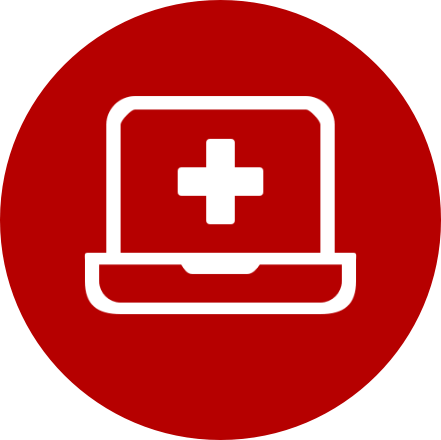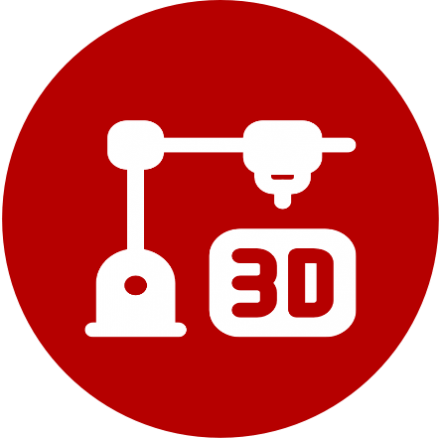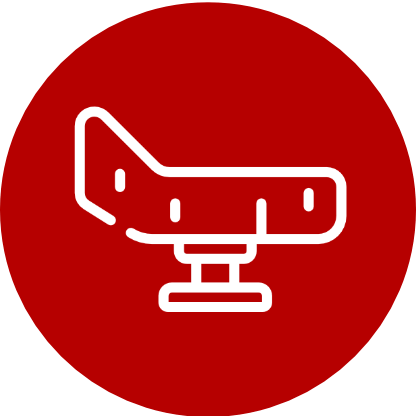Scan to Surgery – Seven Phases of Delivering Better Health Outcomes
Announced in May 2021, the Scan to Surgery initiative aims to provide a single, unified software platform that bridges various siloed activities involved in patient-specific surgical planning and allows for a fully-featured, vertically-integrated software solution that can be used in part or in whole for a diverse range of medical applications.
Whether it is a broken arm, or a hip replacement, almost any case that involves an internal part of a patient utilises one or more of the phases of the Scan to Surgery process. Each of these phases are siloed as they have their own specialists, use cases, competitors, opportunities, and at present use different software applications & approaches from phase to phase.
However, whether a hip replacement or a craniotomy, the phases displayed below are a common and logical flow that is used across a wide range of medical applications. Key to the Scan to Surgery initiative is the deployment of a single software solution to address the five main treatment phases and to leverage existing infrastructure both as a source of data and as an avenue to accelerate the distribution and commercialisation of the software.
Scan to Surgery in Use
Singular Health is developing the 3Dicom software to deliver better health outcomes as a ubiquitous tool for medical practitioners from GPs to surgeons. This enables the Scan to Surgery process to be used in part or in whole depending upon the use case.
Examples:
Following a few months of jaw pain, John visits his dentist to investigate removing his lower wisdom teeth.
His dentist refers him to a local radiology clinic for a cone-beam CT scan (Scan). This scan is then stored in a PACS server online (PACS) which the dentist uses to download the file when John revisits for his follow-up consultation.
At his follow-up, John’s dentist uses 3Dicom (3D/VR Scan Review) to show John in 3D how his wisdom teeth aren’t yet impacting his molars but are angled to do so. He also identifies minor periodontitis (degradation of the jaw bone) which he couldn’t see from an inter-oral examination as it is under the gum.
Using the 3D visualisation, he explains this to John and provides a treatment plan for periodontitis along with a recommendation for wisdom tooth extraction. This is recorded and provided to John for his own knowledge and peace of mind.
During an admission to hospital for abdominal pain, Tom is referred for a CT scan of his abdomen (Scan). The scan is performed in the hospital and stored on a local PACS server (PACS) prior to a radiologist examining it with traditional 2D software and identifying a 10 cm adrenal cortical carcinoma above the right kidney.
A surgeon uses 3Dicom to provide Tom with a 3D visualisation of the tumour, explaining where it is in relation to the kidney and that it appears encapsulated and hasn’t yet metastasised (3D/VR Scan Review), and receiving fully informed consent to remove the tumour.
Prior to the surgery, the surgeon uses 3Dicom in VR to pre-plan an approach around local vasculature and internal organs to remove the tumour (Virtual Surgical Planning).
Jenny suffers from significant degradation of two lumbar vertebrae and requires surgery to fuse the two vertebrae together. Jenny’s surgeon refers her for a CT scan at a local radiology clinic, obtains the scans via a cloud-PACS system and visualises her vertebrae with her in 3D using 3Dicom to obtain consent for the surgery and explain the procedure.
Jenny’s surgeon, using Singular’s AI model for spinal vertebrae segmentation, segments the vertebrae in a matter of minutes from raw radiological images in common Computer Aided Design files in STL format.
They then position the STL vertebrae in the desired post-surgical position using the Virtual Surgical Planning component and collaborates with a biomechanical engineer through the software to design bespoke 3D printable spinal implants.
These implants are sent to Singular’s partially-owned 3D printing subsidiary for manufacture and are sent to the surgeon within a few days for sterilisation and use in the surgery.
Finally, Jenny’s surgeon uses 3Dicom to generate a digitised step-by-step surgical plan and checklist which they can view on an iPad in a sterile, surgical sleeveduring surgery.
*Example only of how the Scan to Surgery process will work once fully integrated.








